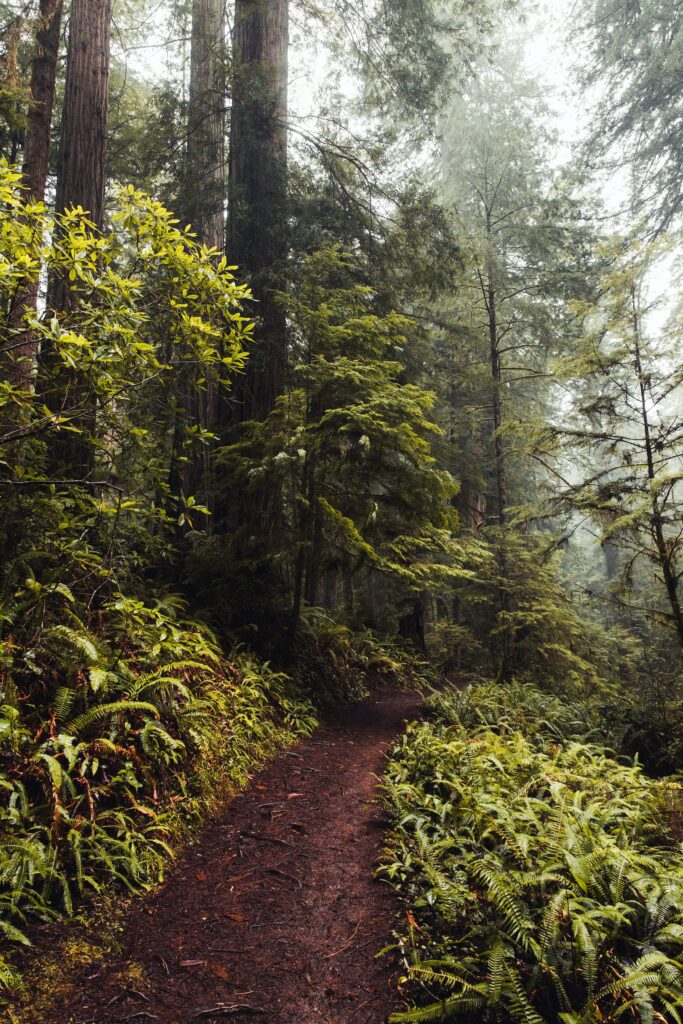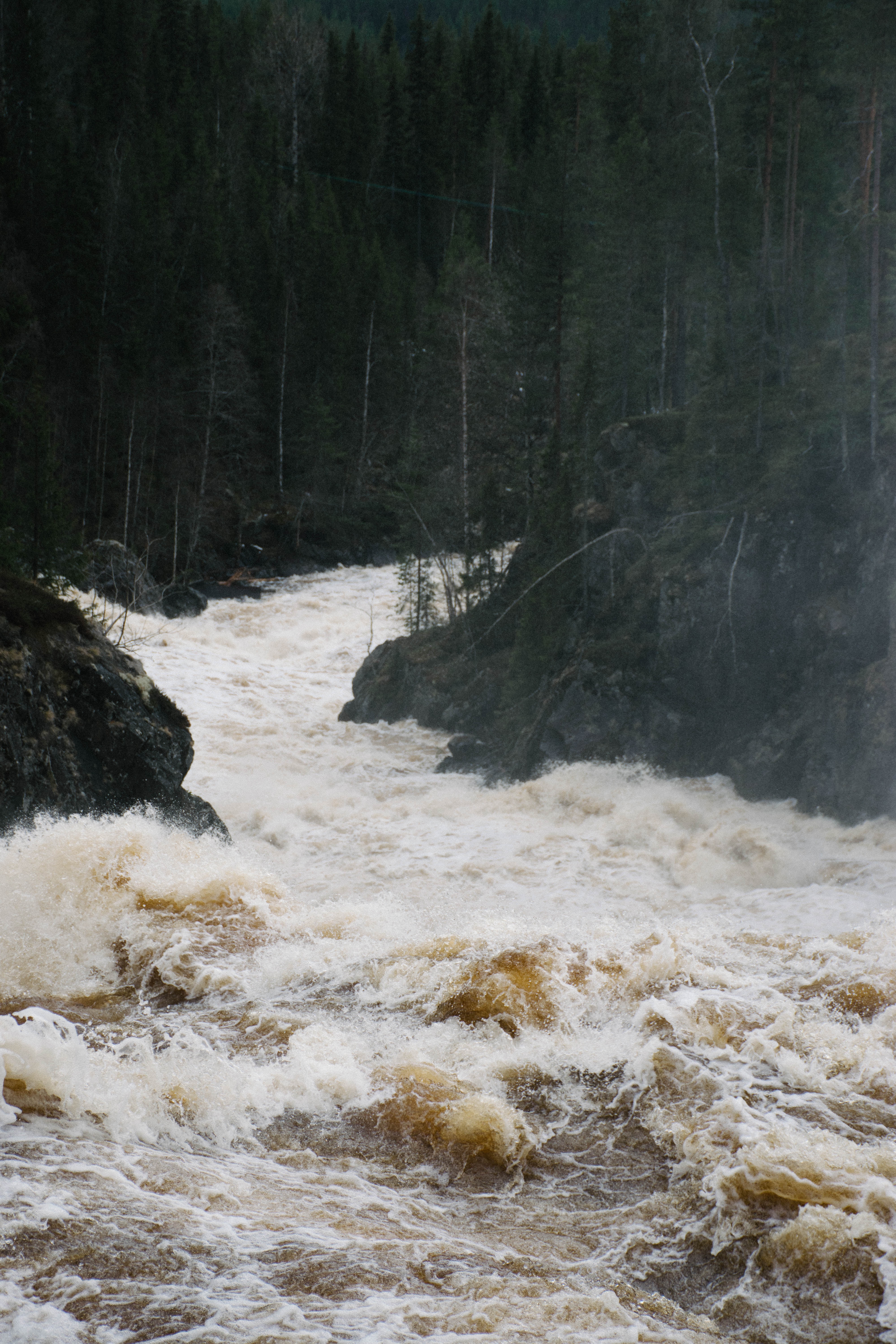By Mario Russel

The rainy season is here and hiking during the rainy season can be an exhilarating experience.
The rainy season, sometimes referred to as the “wet season” can offer a unique and captivating beauty. Drops of rain falling on your head make hiking at this time a beautiful experience. While there are certain challenges and precautions associated with hiking in the rainy season, embracing the serenity it offers can create memorable and awe-inspiring experiences in nature.
Let’s look at the pros, cons and safety precautions of hiking at this time.
The rainy season provides ample moisture for plants, leading to vibrant and lush green landscapes. Trees, bushes, and grasses come alive with intense shades of green, creating a stunning visual contrast against the grey skies and misty atmosphere. Rainfall triggers the growth of wildflowers and other vegetation, adding splashes of colour to the landscape. The forest become adorned with vibrant blooms, creating a picturesque scene for hikers to enjoy. Additionally, the earthy scent of wet soil and the fragrance of blooming flowers create a unique and refreshing ambiance during the trek.
The increased rainfall during this season contributes to the formation of beautiful waterfalls and the revitalisation of streams and rivers. The forest has come alive as countless waterfalls seem to popup from every stream. Witnessing the cascading water and hearing the soothing sound of rushing water can be a magical experience. Rainy weather often brings cooler temperatures and cleanses the air, making the experience more enjoyable.
Hiking in the rainy season tends to attract fewer crowds compared to peak seasons, offering a chance for solitude and a chance to deeper connect with nature. The tranquility and serenity of the trails can enhance the overall experience and allow hikers to immerse themselves fully in the beauty of their surroundings. Clouds, mist, and fog are more prevalent during the rainy season, lending a sense of mystery and peacefulness to the surroundings.
The rainy season is also an active time for wildlife, as animals come out to enjoy the cooler weather. With the abundance of water and lush vegetation, you may have a higher chance of encountering various wildlife species, adding to the excitement of the hike.
Safety precautions
WEATHER CONDITIONS: Despite its beauty, a river can have a flash flood in the twinkle of an eye. Before you go exploring, it is best to check the weather forecast. Stay updated on the weather conditions before you head out. Heavy rainfall can lead to sudden and dangerous flash floods, especially in areas with steep terrain and between valleys. Avoid hiking in areas prone to flash floods such as narrow gorges.

GEAR: Wear appropriate clothing such as moisture-wicking and quick-drying materials like polyester. A waterproof and breathable rain jacket and pants will help keep you dry. Sometime conditions can become cold and windy and you will be glad to change your clothing. Hiking in wet conditions, particularly in cooler temperatures, increases the risk of hypothermia. Don’t forget to wear proper hiking boots with good traction.
Pack the essentials items like a backpack cover or dry bag to protect your gear, a tested waterproof pouch for your electronic devices, a rope, a whistle, and a headlamp. It’s a good idea to bring extra batteries as well and a power bank to recharge your cell phone. Carry extra light clothing, food, and water in case the hike takes longer than expected. The rain can cause the soil to become loose and trees can fall at this time so bring along a machete.

PLANNNG: It is important to plan your route carefully. Consider the terrain and difficulty level of the trail. Rain can make trails and rocks slippery, increasing the risk of slips, falls, and injuries. Exercise caution and wear appropriate footwear with good traction.
It is important that you choose routes that are safe and suitable for the conditions. Be cautious of slippery surfaces, especially on steep slopes or river crossings. Rain can loosen soil and rocks, increasing the risk of landslides. Use trekking poles for stability. Stay away from areas prone to landslides or flash floods, and never attempt to cross a swollen river or stream.

STAY HYDRATED & ENERGISED:Even though it’s raining, it’s important to drink plenty of water and stay hydrated. Pack high-energy snacks and meals to keep your energy levels up during the hike.

RESPECT NATURE and be mindful of the environment while hiking in the rainy season. Stick to designated trails to avoid damaging fragile ecosystems. Avoid trampling on vegetation and be aware of any wildlife. Some animals may be more active during or after rain, which can lead to encounters or potentially dangerous situations that may be more active during this time.
KEEP COMPANY: It is best to Inform someone about your plans and consider hiking with a companion. Let someone know about your hiking plans, including your expected route and return time. This will ensure that someone is aware of your whereabouts in case of any emergencies. Because of the heavy rain there may be limited access to emergency services. Heavy rain may make trails inaccessible or hinder rescue efforts in case of an emergency. Plan your hike carefully, inform someone about your plans.
FLASH FLOODS GUIDELINES

1.DON’T PANIC: During a flash flood many people panic, it is essential to stay calm and alert. Keep a clear head and stay aware of your surroundings. Panicking can hinder your ability to make sound decisions
Recognizing the signs of flash flooding is crucial for hikers to ensure their safety. Here are some indicators that can help you identify the presence of flash flooding:
Persistent or heavy rainfall is often a precursor to flash flooding. If it has been raining heavily for an extended period or if a storm is approaching, the risk of flash flooding increases. Rapidly rising water levels is a definite indicator. Keep an eye on rivers, streams, and other bodies of water along your hiking route. If you notice water levels rising quickly or if the water becomes increasingly turbulent, it could indicate an impending flash flood.
Often flash floods carry large amounts of debris, such as logs, branches, or even entire trees, downstream. If you observe debris floating in the water or notice the water turning muddy and discoloured, it may suggest an ongoing or upcoming flash flood.
2. LISTEN FOR UNUSUAL SOUNDS: A flash floods can produce loud roaring or rushing sounds caused by the force of the water. If you hear an unusual and persistent sound resembling a waterfall or a freight train coming from upstream, it could be an indication of a flash flood.
3. LOOK FOR CHANGES IN WATER COLOUR OR CLARITY: If the water suddenly changes colour, particularly to a muddy or brownish hue, or if the water becomes unusually cloudy, it may indicate sediment and debris being stirred up by a flash flood. The rapid increase in water can cause a sudden surge in water velocity. If you notice the water flowing faster than usual or if you observe a significant increase in the speed of the current, it could be a sign of an impending flash flood. Avoid low-lying areas and quickly move to higher ground away from rivers, streams, and flood-prone areas.
4. DO NOT CROSS: Do not attempt to cross flooded areas on foot or in a vehicle. Even shallow-looking water can be deceptively powerful and sweep you away. It’s better to wait for the floodwaters to recede or find an alternate route. Avoid wading or swimming in fast-moving water. Even a few inches of swiftly moving water can sweep you off your feet. It’s best to wait for the water to recede or find an alternate route. Immediately,Ascend to elevated terrain or find higher elevations until the flooding subsides.
5. CALL FOR SOS: If you are trapped or in immediate danger, call emergency services and provide them with your location and situation. Provide as much information as possible to assist rescue teams in locating and assisting you. If you are hiking with a group, stay together and assist each other finding shelter. Look out for one another’s safety. Remember, the key priority during a flash flood is to protect your life and the lives of others. Always prioritize your safety over personal belongings or equipment.
6. AVOID CURRENT: Heavy rain and strong wind can cause electrical poles to fall. Avoid contact with electrical equipment such as power lines. Electrocution is a significant risk during flooding.
7. STAY ALERT: Remember, safety should always be your top priority when hiking, especially during adverse weather conditions. Use your judgment and be prepared for changing weather patterns. it’s important to stay alert and be prepared to take appropriate action to protect yourself and others. The forest is a place you should never take for granted. Additionally, consider choosing trails that are less prone to flooding or other hazards during the rainy season. It may be best to postpone the hike if you are unsure about the conditions. Just ensure that you are well-prepared and stay safe while exploring the wonders of the rainy season.
